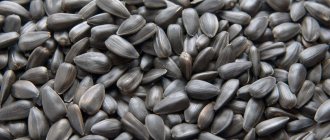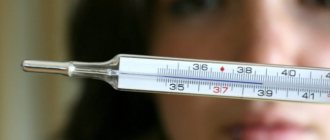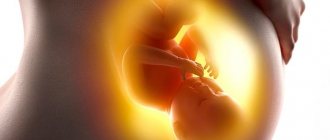Every young mother, sooner or later (better, of course, early) asks an important question: when can you play sports after childbirth and what loads will be correct?
It can be very difficult to figure it out on your own - during pregnancy, body proportions, breast shape, posture have changed, and stretch marks that are not pleasing to the eye have appeared. How to get rid of them?
What to do after a cesarean section and how to deal with diastasis? Will lactation training harm your lactation? How to combine fitness and feeding?
We talk about all this, as well as sports suitable for young mothers, in this article.
When can a nursing mother exercise after giving birth?
It’s worth starting by adhering to the main rule - do not harm the body.
It’s clear that during nine months of gestation everyone gains weight: some to a greater extent, some to a lesser extent.
This depends on the usual sports activity before pregnancy, during it, and, of course, on who ate how much and whether they ate for two.
After the birth of a child, an increase of up to five kilograms is considered adequate - the rest is lost due to the weight of the child himself and amniotic fluid. The size of the mammary glands also increases, and swelling appears.
All this results in sad numbers on the scales.
Some problems go away on their own, while others remain on the woman’s conscience. Therefore, at the first stage of returning to its former form, it is important to determine your departure from the norm.
To do this, we calculate the body mass index (BMI): divide your weight by the square of your height. For example, 60/(1.60x1.60)=23.4.
With a BMI less than 19, an increase of up to 15 kilos is considered acceptable (during pregnancy, of course); at 19-26 - up to 12; with a score of 26 and above, you should not have scored more than 9.
From this simple mathematics it becomes clear: if you gain weight, the fat layers will not dissolve on their own. It's time to hit the gym.
The birth of a child changes not only the figure, but also the character of a woman
Stop list: what stress should be avoided after childbirth
After childbirth, you should avoid sports associated with jumping, shaking, and excessive exertion. These types include:
- Run . Exercising outside or on a treadmill puts too much stress on your legs and cardiovascular system.
- Cycling . Mountain biking and intense exercise on exercise bikes put a lot of stress on the pelvic organs and spine.
- High impact aerobics . Classes on the step platform are accompanied by a large number of jumps. They are harmful to breasts that have greatly increased in volume and can cause problems with veins and even fainting.
- Wrestling, karate, judo and other contact sports. There is a high risk of chest injury.
- Basketball and volleyball . A large number of jumps is not good for the chest, and there is a risk of developing varicose veins.
- Skydiving and other extreme sports . Adrenaline surges negatively affect lactation; in some cases, milk may disappear.
Where should a nursing mother start?
This is a question we must answer in the second stage.
Immediately after the birth of your baby, create a proper balanced diet, taking into account the advice of your obstetrician-gynecologist and pediatrician: if you are breastfeeding, diet and exercise should not harm either you or the baby.
Some girls start training within a month after giving birth; others, especially if there was a difficult pregnancy and cesarean section, have to postpone the start of classes for another two or three.
The recovery period depends on chronic diseases, blood pressure, normal physical fitness (it’s foolish to think that if you weren’t particularly active before pregnancy, your muscles will quickly recover), and the tendency to bleed.
Start training with minimal loads
If you feel great, you can start when the postpartum discharge stops.
In the case of a cesarean section, you will have to avoid abdominal exercises, various crunches and planks for at least two more months.
It is also worth remembering that during childbirth there is a slight deformation of the pelvic bones, spine and back muscles.
This means that classes should be light and measured, so Pilates, proper breathing practices, some yoga asanas, and gymnastics for the back, arms and legs would be an ideal option for getting back in shape.
Many girls are interested in the question: when can they start exercising after giving birth with stitches?
The answer is clear - only after their removal and complete postoperative recovery.
There is absolutely no need to provoke discrepancy, bleeding and possible prolapse of the uterus.
And in the case of a cesarean section, for example, you can start training the abdominal muscles approximately six months after the operation.
Give up an active sports lifestyle for a while in favor of proper nutrition and walks in the fresh air.
If you decide to exercise with dumbbells, their weight should not exceed a kilogram
Exercises after childbirth, how and when to do it, which complex to choose
Physical activity is very important for the health of any person. Exercise helps you cope with stress, recharge your energy and get your body in order.
It is especially important to exercise during the postpartum period.
Today it has already been proven that mothers who do daily exercises are less likely to experience postpartum depression and recover much faster after pregnancy and childbirth.
The safest way to lose weight after pregnancy!
When can I start classes?
A few days after the birth of the baby, if the birth took place without complications, the mother can begin to do the first set of exercises after childbirth to retract the abdomen and quickly contract the uterus.
Later, after 2-3 months, you can do more complex exercises after childbirth to load all muscle groups.
First exercises
The very first exercises include Kegel exercises, breathing exercises, back exercises and chest exercises.
Breathing exercise
- While still in the maternity hospital, if your birth was natural and uncomplicated, you need to start training your abdominal muscles. Conventional abdominal exercises, of course, are not suitable for women in labor, but breathing exercises can be an excellent option for quickly regaining your figure. To do this, you need to lie on your back, bend your legs and place them on the bed, on your full foot. Take a deep breath through your nose, sucking in your stomach. Hold your breath for 3–5 seconds. Exhale sharply through your mouth, inflating your stomach, and also hold your breath. Relax, rest. You need to start this kind of gymnastics with 5-6 repetitions, increasing the number of exercises every day.
- After you have mastered the first exercise and it has become too simple for you, you can introduce the next element of exercise. Now, when inhaling, you need to not only pull in your stomach, but also lift your buttocks. Make sure that your lower back does not lift off the surface. Start introducing new elements gradually, with 2-5 exercises. Every day, increase the number of exercises by 1-2.
Kegel exercises
This gymnastics after childbirth allows you not only to tighten your figure, but also to restore tone to the muscles of the pelvis and vagina, which is very important for a woman’s health.
Flaccid muscles in this area can cause conditions such as urinary incontinence or uterine prolapse.
Weak vaginal muscles can also lead to loss of sexual desire and satisfaction, and this is a sure path to sexual discord between spouses.
- For those who are not familiar with this complex, you need to start training with the simplest exercise. In any place and in any position, squeeze the vaginal muscles and hold in this position for 3-5 seconds. Repeat the exercise 20–30 times. You need to perform 8-10 approaches per day. In order to understand which muscles need to be squeezed, do a short test. When going to the toilet, try to stop urinating and then continue. During the test, you will clearly feel how to perform this exercise correctly.
- More advanced women can perform more difficult exercises. One of the most effective is the “ladder” exercise. To perform this exercise, you need to control the vaginal muscles well enough. Tighten the lower part of the muscles first, then the middle and finally the upper. It's like you're climbing stairs. Hold the contraction for a few seconds, and then relax the muscles in the reverse order.
Chest exercise
Exercises for the chest can be done at any free minute. Exercise will help you maintain breast shape after you stop breastfeeding. These exercises can be started immediately after giving birth.
- Sit up straight and watch your posture. Clasp your arms in front of your chest, elbows pointing out to the sides. Squeeze your hands forcefully. At the peak of the force, hold for a few minutes and loosen the lock. Repeat the exercise 10–20 times.
- Wall push-ups. This exercise is very simple to do and does not take much time. Stand facing the wall and lean your hands on it. Hands should be shoulder-width apart. Push up, making sure your elbows are pointing down. Push-ups can be performed during the day at any free moment.
Exercise for the back
For women who were involved in fitness before pregnancy, you can perform exercises such as twisting or super twisting, and for those who are not familiar with such exercises, they can be replaced by turning the body in different directions, bending over and squats. The load on the back must be selected especially carefully.
It is better to start with basic exercises to avoid straining your back muscles.
Later, when you have fully recovered from childbirth, you can choose an individual training schedule for yourself. You can do fitness, yoga, jogging or go to the gym.
What you need to know
When you decide to take care of your figure, after giving birth you need to understand that exercise should be conscious and enjoyable. Only in this case will training bring not only benefits, but also real pleasure.
In order to achieve maximum results, you must follow the following rules:
- Choose a specific time for daily activities when you can devote 30-40 minutes to this activity without being distracted by other things.
- Exercise in a ventilated room or in the fresh air.
- Take your time, do all exercises slowly and consciously.
- Do not try to immediately start heavy loads; you need to increase the intensity gradually and smoothly.
- Breathe correctly, freely and easily.
Probably every young mother has noticed that at certain times of the day physical work comes easier to her, but at other times the same activity only brings fatigue and weakness.
So, according to research results, scientists have found that the best time for physical activity for a person is in the morning from 10.00 to 12.00 and in the evening from 16.00 to 19.00. It is at this time that the body is ready for physical activity, which means that exercise will not bring fatigue and poor health, but will give vigor and strength.
Also, do not forget that in the evening hours you can only do relaxation and stretching exercises, and strength training should be left for the morning hours.
Many mothers complain that the child takes up too much time and sometimes there is no strength or desire left to exercise. In this case, you can easily combine exercises with caring for your baby.
Walks. Give up the stroller and, in the warmer months, place your child in a slim or kangaroo carrier and go hiking! Walking burns a lot of calories, and the added challenge of having a baby will help tone your abdominal, leg, and buttock muscles, as well as strengthen your back muscles.
Games. Play more outdoor games with your baby. With a child in your arms, you can squat, turn your body and bend over. In this case, the child will have fun, and such games will bring you a lot of benefits.
Running a home can provide you with many opportunities for ongoing physical activity. Look around, you see trash on the carpet, bend down and pick it up, make sure your legs don’t bend at the knees, bending like this during the day will quickly remove your belly fat and give you a wonderful stretch.
Avoid using a mop. Wash the floor at an angle. This will also contribute to the rapid restoration of your figure after childbirth.
Another trick that young mothers use is to give up the TV remote control. Tuck it away and you'll be more likely to get up and move when you want to change gears.
Playing sports will give you energy and protect you from many diseases, which is very important for proper child care.
After all, only a healthy, vigorous and cheerful mother can give her baby the necessary amount of love and care.
How to combine fitness and breastfeeding?
When you know that you can already exercise after giving birth, it is especially important to follow simple rules when breastfeeding so that exercise does not harm the baby’s health:
- Your exercise schedule should coincide with feeding. Ideally, you should start after your first morning feed, but before your breakfast. This is necessary so that the body produces less lactic acid, which gives milk an unpleasant taste.
- You should refrain from too intense workouts, even if you are in good health - exercise on exercise machines, with dumbbells and weights can lead to a decrease in milk supply.
- Half an hour of training at the first stage will be enough, do not drive yourself to a nervous breakdown with photos of fitness girls on the Internet and the miraculous quick return to their former form of podium divas.
- You need to exercise in a special sports bra to securely hold your enlarged breasts and in a bandage if you had a caesarean section.
- Drink water during exercise and restore the balance of lost fluids.
- After sports, eat protein foods and reduce the amount of carbohydrates you consume. Eat more approved hypoallergenic vegetables and fruits.
Use a special bandage to support your stomach
Is sports necessary when breastfeeding?
Physical activity has a positive effect on the general condition, gives a surge of vigor, and increases the body's endurance. The benefits of sports during lactation are as follows:
- Prevention of depression. During physical activity, endorphins are produced. These substances are also called “joy hormones.” Endorphins elevate mood, reduce anxiety and restlessness.
- Acceleration of metabolism. Strong exercise increases your metabolic rate. This feature has a positive effect on the breakdown of fats and milk production.
- Increased skin elasticity. Abdominal muscles lose tone after childbirth. Physical exercise normalizes their condition.
- Getting rid of cellulite. In the third trimester of pregnancy, a woman moves less. This can lead to stagnation in the form of cellulite. When a woman performs exercises, deposits are broken down and the skin becomes smooth.
Sport is good for lactation. The main thing is to protect the chest from injury and excessive mobility. To prevent damage, special fixing underwear is selected.
When can you exercise after childbirth with ruptures?
The recovery and healing process is individual for everyone, but if stitches were placed after childbirth, only a doctor can guide you, so it is especially important not to miss a routine examination by a gynecologist.
It may take up to six months for the body to fully strengthen and return to shape, otherwise there is a danger of the stitches coming apart.
With your doctor's permission, practice Kegel exercises
The only exception in this case may be Kegel exercises - they strengthen the muscles of the perineum and vagina, help overcome the problem of urinary incontinence and normalize blood circulation in the pelvis.
In a normal birth, they can be performed the very next day.
For ruptures, careful training begins 1-1.5 months after suturing, sometimes earlier.
It is important to monitor your well-being and the absence of discomfort.
And we repeat again - every woman’s body is individual, do not be shy and do not be lazy to ask the doctor if it is possible.
The first physical activity, when it is already possible for a nursing mother to engage in gentle sports after childbirth, is recommended by the famous doctor Evgeniy Komarovsky to start with the most basic:
- Walk and walk with children more often
- Standing more than sitting means you'll burn twice as many calories.
- Find a friend to go shopping and play sports together, while talking you will not noticeably increase the distances traveled
- Praise yourself for regularity and fidelity to training
- Take them seriously and don’t look for excuses from the series: “I’m a mother, I have a child, I don’t have time,” because 99.99% of success is your desire and desire to return your body to its former attractiveness
Take more walks in the fresh air
Sports for young mothers
Women who have recently given birth want to improve their figure, get rid of extra pounds, and increase stamina. Properly selected exercises will help restore hormonal levels and strengthen the muscles of the pelvis and internal organs.
The following sports are recommended for young mothers
- Swimming . Exercising in water relieves stress on the spine, strengthens the muscles of the arms and legs, improves blood circulation and lifts your mood.
- Aqua aerobics . It strengthens the arms and legs well, helps tighten the abdominal muscles, and develops coordination. Classes are suitable for overweight women, helping to avoid overload.
- Belly dance . Excellent for training the pelvic organs and relieving depression. Suitable for nursing mothers, as well as women suffering from lower back pain.
- Pilates . Tightens weakened muscles and skin. Allows you to get rid of fat deposits and cellulite, makes stretch marks less noticeable.
- Yoga . There are classes specifically designed for breastfeeding mothers. Some centers offer sets of exercises that can be performed with your baby. Yoga helps you relax and strengthens your muscles.
- Walking _ Walking at a fast pace allows you to lose extra pounds, train your legs, improve blood circulation, and help fight fatigue and insomnia. Recommended for hemorrhoids and gastrointestinal problems.
- Skis and skates . After getting back in shape with exercise, you can go mountain or cross-country skiing or go to the skating rink. These sports relieve depression, train balance, and strengthen the immune system.
Where to put the “pregnant” belly after childbirth?
If you did not stop working out in the gym before and during pregnancy, the muscles will begin to return to normal in the first two weeks after birth and will support the uterus, preventing it from protruding.
In other cases, you have to fight with your stomach.
In women who have not taken care of their body, such a protrusion can last more than two months, and after that it is impossible to do without training to cope with sagging skin and stretch marks.
After giving birth, when should a nursing mother go in for sports and start doing those same non-press exercises?
If the birth was natural and easy
Abdominal muscle training can begin when vaginal discharge completely stops.
It usually takes up to 8 weeks for full recovery. Do not rush into the training process immediately, increase activity and time gradually.
Don’t jump straight into complex abdominal exercises to avoid getting the opposite effect.
During caesarean section
You can start pumping up your abs in six months, when the uterine scar is fully mature.
With diastasis
Under no circumstances should you perform exercises aimed at training the rectus abdominis muscle.
Mild diastasis will go away quite quickly, but your doctor will be able to tell you the degree of discrepancy and how to deal with it. Do not self-medicate and do not complicate your life.
How much to exercise and how to combine sports with breastfeeding
The load should be increased gradually, regardless of the type chosen. It is advisable to start with simple exercises, allowing the body to remember the sensations during and after exercise. The number of exercises themselves, be it squats or abdominal presses, should be such that the last of them is done with effort, but not with all your might. Here a lot depends on the level of physical fitness, but the general principle remains the same: you need to increase the number of exercises in stages, as well as the number of cycles. In order to get a visible result, there should be at least three workouts per week lasting 30 minutes or more.
There is a lot of discussion about the compatibility of physical activity and breastfeeding. When wondering what exercises can be done after childbirth, young mothers sometimes hear that it is better not to overdo the exercises, as this may “burn out” breast milk or change the taste due to lactic acid released into the blood. Regular fitness, swimming or other exercises cannot lead to such a result; for such changes to occur, you need to train almost to the point of exhaustion. If you feel that lactation is getting smaller after training, you just need to reconsider your drinking regimen. It is possible that the body loses more fluid during training, so you should drink not only after exercise, but also during it.
How to get in shape after childbirth - useful tips
After a caesarean section, it is better to do recovery exercises by wearing a bandage. This should be discussed with your doctor first. If hoop is one of your favorite activities, then it is better to start with a standard thin hoop, and over time (after a month or two) switch to a hula hoop.
Physical education classes are best carried out according to a special sequential scheme:
- Initially, the exercises should be very simple. Breathing exercises or those that can be performed in a supine position are suitable. You need to repeat one or two times, gradually increasing the number of repetitions.
- After some time, you can do exercises and warm-ups, which consist of swings, squats, bends, and more. You can remember the school warm-up. At first, one or two repetitions are enough, then their number increases.
- If the body reacts normally to the load, you can move directly to sports. Yoga after childbirth, fitness, swimming, shaping, Pilates and more. However, yoga can replace the second point or become its addition. You need to start with one weekly lesson, adding another lesson per week every month. Running after childbirth is possible no earlier than 8-10 months later.
Breastfeeding mothers need to make sure that the body does not overwork and that it has enough fluid (otherwise it will not produce enough milk). As you increase your load, you need to drink more fluid. It is better to engage in active activities after taking baby milk, so that the lactic acid formed during exercise in the mother’s body is neutralized before the next feeding.











